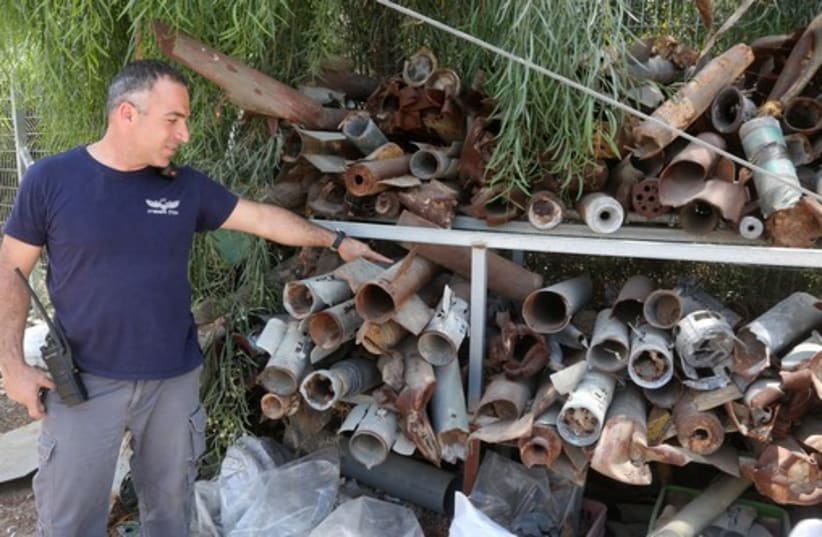
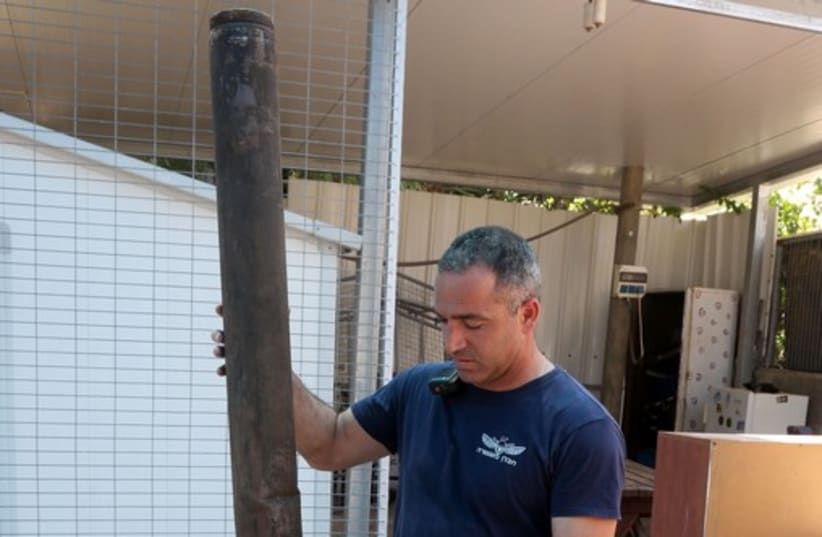
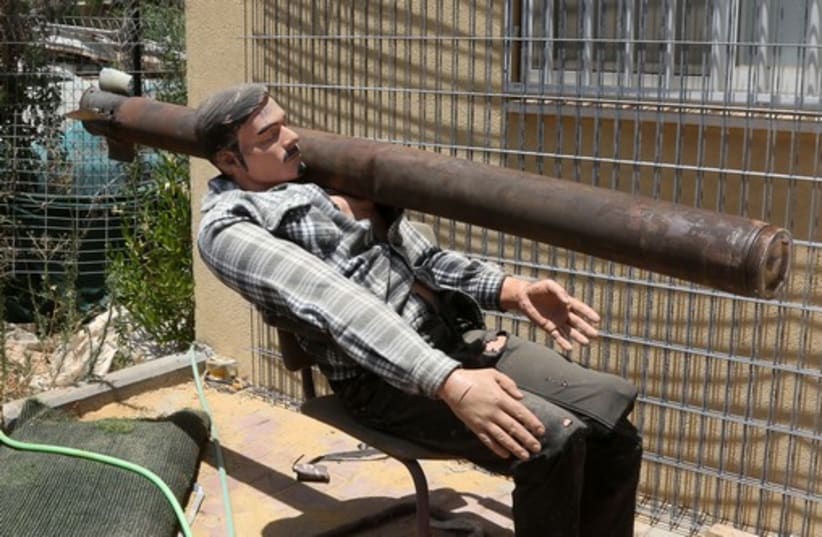
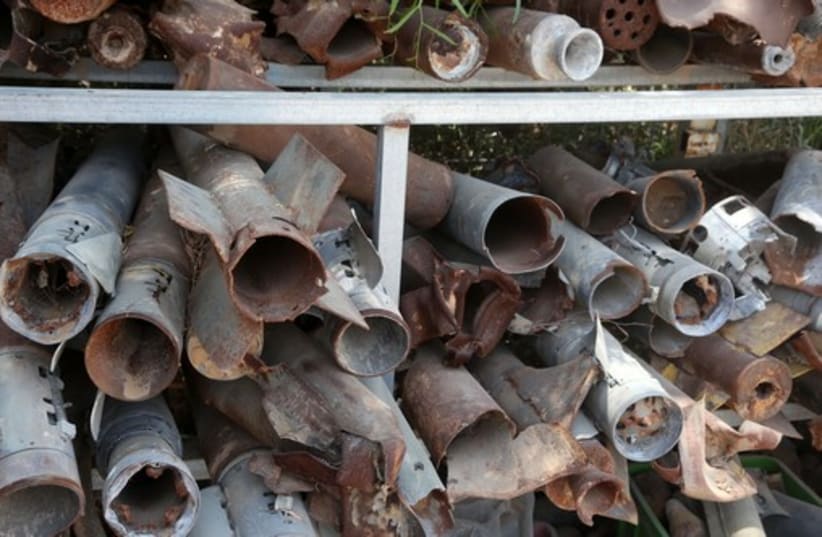
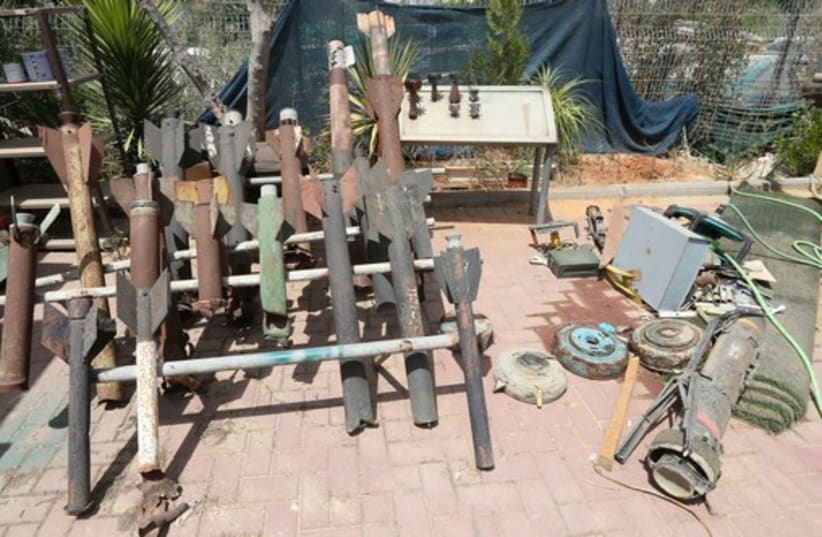
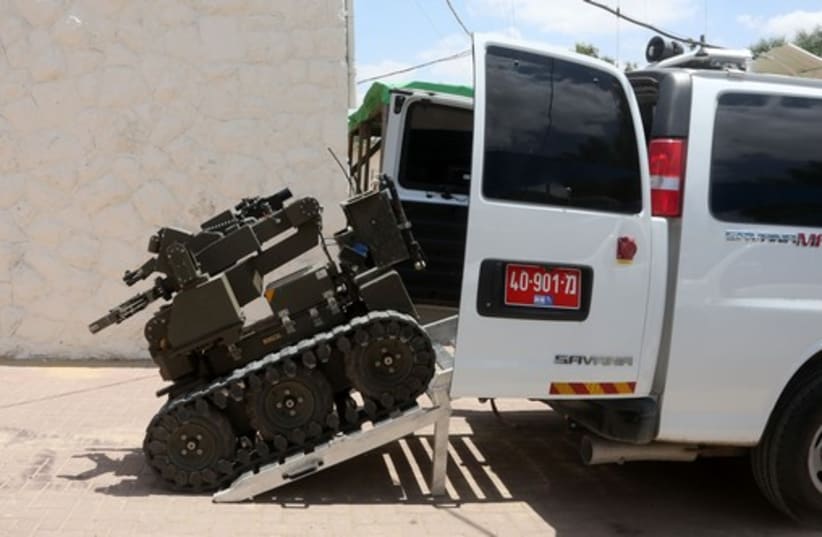
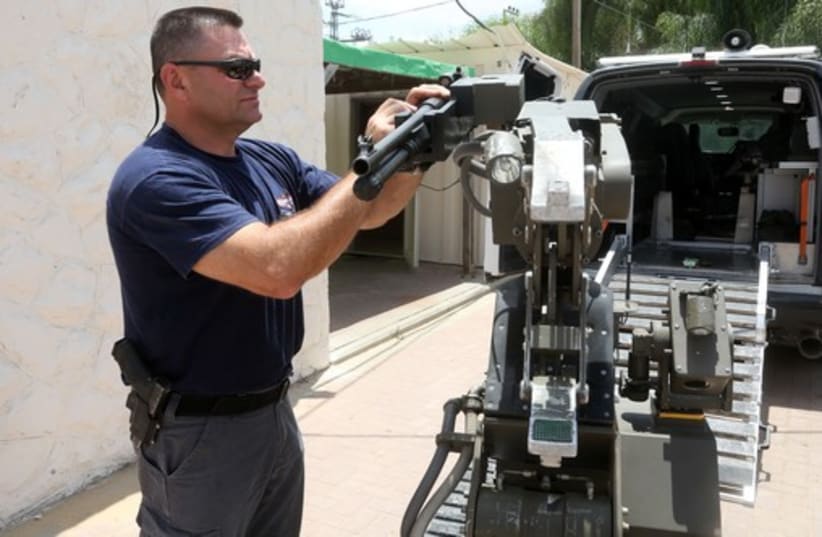
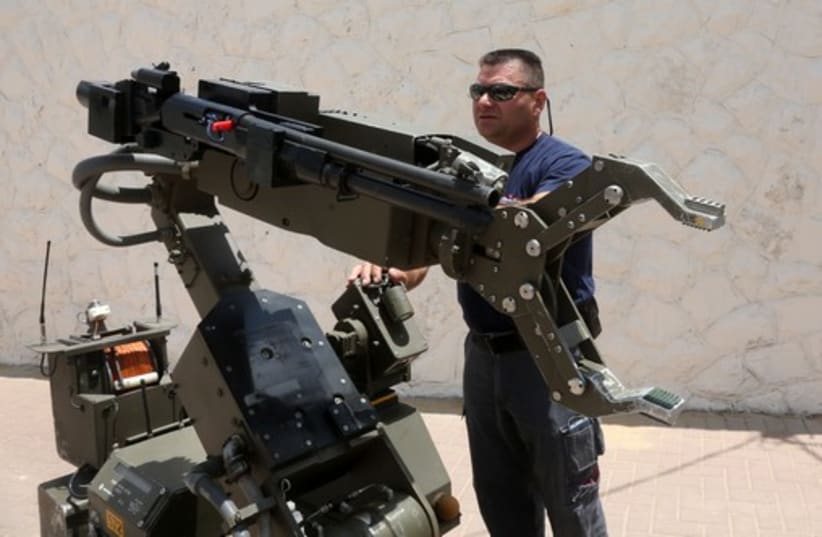

On Tuesday, a couple of hours after mortars and rockets fired from the Gaza Strip signaled that news of a cease-fire was premature, he explained the patient, delicate nature of handling explosives that fall from the sky.A few years ago Kurtzfeld saw Hurt Locker, the Academy- Award winning film about an American explosive disposal team in Iraq, but wasn’t impressed.“You’re not some Lone Ranger working out there by yourself like a cowboy. You’re part of a team, it’s the same for the Americans as it is for us,” he said.During his time in the Negev subdistrict’s bomb squad, Kurtzfeld covered cities such as Ofakim, Rahat, and Netivot, as well as the Eshkol region and the villages and kibbutzim of the “Gaza Envelope.”According to Kurtzfeld, whose region has been hit by hundreds of projectiles in the past couple weeks, the rocket strikes are handled on a priority basis. Those that hit in the middle of neighborhoods or next to houses are dealt with first, followed by ones that land on streets and highways.Those that strike open areas are last on the list, some only being addressed months later.On the wall in his office a dry-erase board showed well over a dozen descriptions of rocket impacts found in open areas that have been marked and closed off, to be handled at a later date.By his estimation, as many as 30-60 percent of the mortars and rockets that have landed in his area since Operation Protective Edge began have still not been retrieved.Part of this may be because of the small size of the bomb squad units. Kurtzfeld said in his entire region there are only three sappers, and that in other regions it’s the same size or only slightly larger.In addition to the large number of projectiles, they also deal with swarms of onlookers, who arrive at the impact scene to take pictures or scavenge for shrapnel souvenirs, no small matter considering the fact that a significant number of the rockets do not explode or only partially explode after impact.When Kurtzfeld began working on the bomb squad, rockets from Gaza had barely even reached Sderot much less Tel Aviv.His area included the kibbutzim of the Gaza envelope, where mortars fall without warning, giving residents no time to run.The rockets fired there land with only seconds of warning, and the strikes are so common in the Eshkol region and other areas adjoining the Gaza border that they often don’t make the news at all.“This didn’t start a week ago with Operation Protective Edge. There was heavy rocket fire weeks before that, and years before it was elsewhere. Unfortunately, when it was just communities next to Gaza it was something people could disregard,” he said.He added that while this operation is currently being defined by the success of the Iron Dome system in shooting down rockets from Gaza, “we’re working in areas not covered by the Iron Dome, where it’s not a factor.”Though it is had not made headlines recently, the Southern District of the Israel Police has for the past year dealt with a large number of underworld bombings, which Kurtzfeld said pose their own dangers.“Handling a criminal bomb is more dangerous because someone is operating it or there is some sort of operating device. Ammunition [rockets] is only dangerous when it is fired or after it has been fired and is out in the field. Once you find a bomb you have no idea if it can still go off,” Kurtzfeld said, adding that though the criminal-related bombs don’t typically have as much explosive material in them as the rockets, they’ve become more dangerous as gangsters started to pack them with shrapnel.The high frequency of explosions – and in quieter times, mafia bombings – creates what a fellow sapper, Boaz, said was one of the major dangers of the job: routine. “You have to constantly fight the routine. Once you stop being afraid, careful, this is when you can get hurt.”